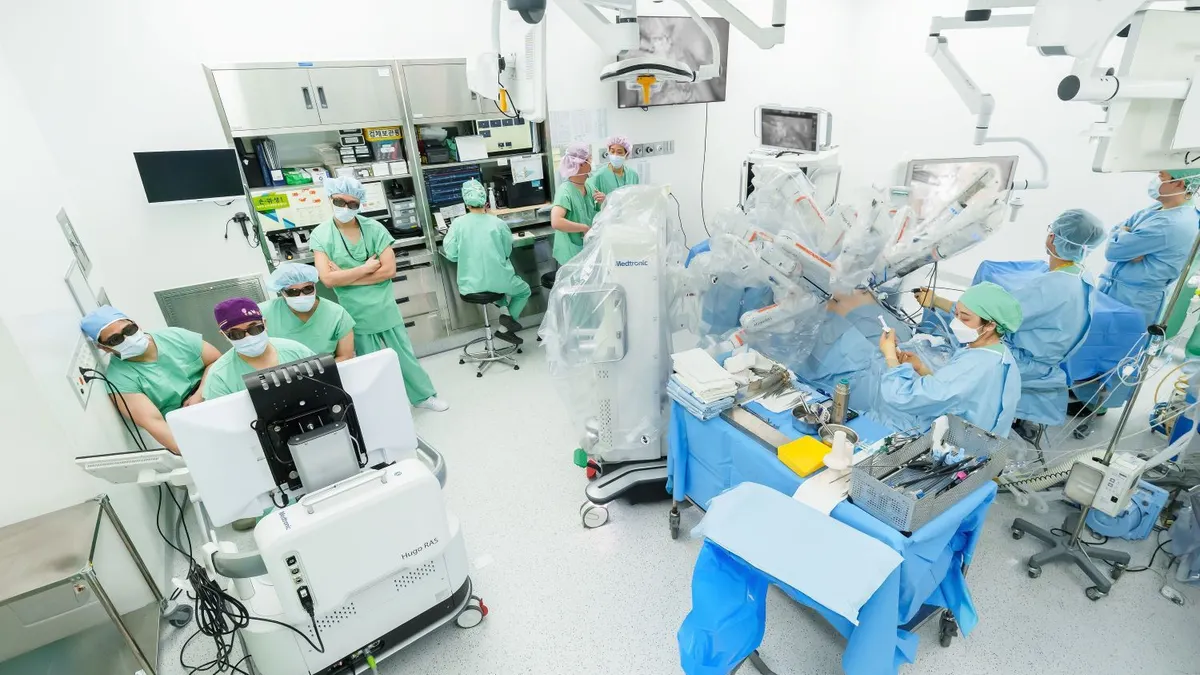Almost a year after FDA first put industry on notice that the closure of an Illinois sterilization facility could send aftershocks through the medical device supply chain, AdvaMed is urging Environmental Protection Agency regulators to forego uniform restrictions on ethylene oxide it cast as overly burdensome.
The medical device trade association was among the dozens of state environmental regulators, commercial facilities, local community advocates and others that weighed in on an advanced notice of proposed rulemaking regarding emissions standards for commercial sterilizers that use ethylene oxide, which was open for public comment through the beginning of this week.
An EPA spokesperson confirmed to MedTech Dive that a proposed rule is now expected in mid-2020. The medical device industry is watching the regulation closely, as about half of devices sterilized in the U.S. currently require use of ethylene oxide.
AdvaMed is concerned that a uniform emissions factor for calculating fugitive emissions from commercial ethylene oxide facilities would be “problematic” given facility-to-facility differences in size, building ventilation and air pollution control device equipment, types of medical devices undergoing sterilization, and other factors. Outside of medical device sterilization, the chemical is also commonly used as a fumigant for spices.
The group also wants EPA to revisit its Integrated Risk Information System, or IRIS, value for the chemical sterilant and urged the agency to ask the National Academy of Sciences to review its 2016 IRIS assessment.
"EPA should use a recalculated ethylene oxide potency estimate that fully considers the weight of the scientific evidence to identify an exposure level that increases the concentration of ethylene oxide already present in the human body as a result of endogenous production, and that therefore might plausibly be associated with an increase in cancer risk," AdvaMed asserted.
Regulators are caught in a potential public health Catch-22. The competing concern is that ethylene oxide is a carcinogen, meaning people who live near the sterilization facilities with higher emissions may face an elevated risk of developing cancer.
Illinois Attorney General Kwame Raoul earlier this week led a coalition of 11 state AGs calling on EPA to require reduction of atmospheric emissions from each exhaust point by at least 99.9% and mandate that all generated ethylene oxide emissions be captured, among other stringent modeling and testing recommendations.
"The EPA last reviewed the [National Emission Standards for Hazardous Air Pollutants] for commercial sterilizers in 2006 and failed to make any meaningful changes," Raoul said in a press release. “Illinois has already acted to significantly reduce EtO emissions, but there is an urgent need for the EPA to strengthen national EtO standards to protect communities throughout the country.”
Raoul's comment said 36 states have facilities that would be subject to the EPA rules and 288,000 people live in parts of the U.S. the EPA has deemed at elevated risk of EtO exposure. Raoul contended that the reason some states have been hotbeds of regulatory activity is because EPA has "not updated the NESHAP to reflect current science."
Former Illinois AG Lisa Madigan was part of a lawsuit filed against commercial sterilizer Sterigenics in 2018 for air pollution violations. On Feb. 15, 2019, the Illinois EPA announced it issued a seal order to Sterigenics to halt operations at its Willowbrook, Illinois facility. FDA sent a notice Feb. 27 that the closure could have an impact on manufacturers' access to sterilization. In late September, Sterigenics announced it would permanently close the facility as Illinois enacted stricter regulations on ethylene oxide emissions.
Also caught in the crosshairs is Medline Industries. A spokesperson said this week that the Waukegan sterilization plant that's been temporarily shut down to comply with those new regs was set to begin new emissions control system testing on Wednesday. The process is expected to continue over the next few weeks, overseen by the Illinois EPA. It's taken longer than expected for the facility to reopen; an earlier estimate pegged the reopening date during the week of Jan. 27.
AdvaMed also affirmed its commitment to development of novel sterilization alternatives to ethylene oxide. In conjunction with a public meeting on ethylene oxide issues in November, FDA selected a series of manufacturers, including BD, Abbott and Medtronic, and commercial sterilizers, including Sterigenics and Steris, for a pair of "innovation challenges" to develop new ways to sterilize devices or reduce ethylene oxide emissions.
FDA said at the time that within 60 days of selecting the winners, collaboration on technology development, potential risks and benefits and possible regulatory pathways would begin.
Still, "it must be recognized that this is a long-term process," AdvaMed wrote, citing discussion at the meeting that implementation of an effective alternative is likely at least a decade away.



















